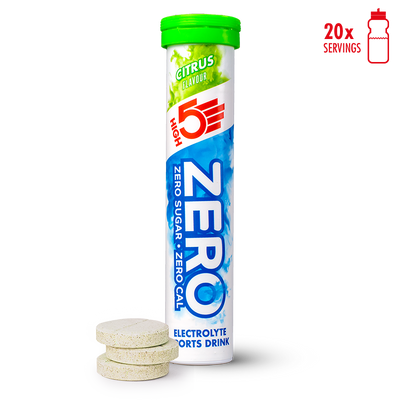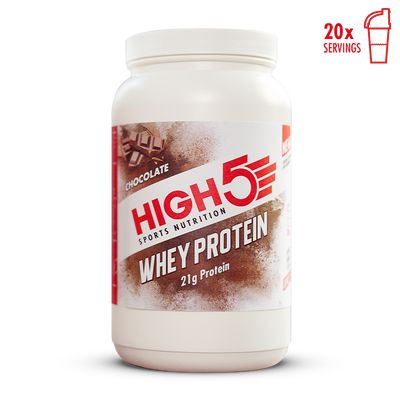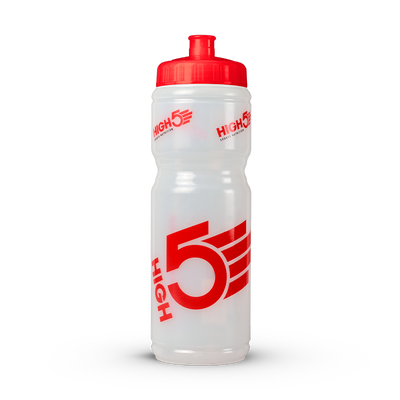A long distance triathlon (or IRONMAN) is widely considered one of the most difficult one-day sporting events in the world. The correct nutrition strategy will help you get the most out of your race and you will enjoy it more but do you know what and when to eat and drink on race day? Getting your nutrition right can make all the difference to getting across the finish line and having fun, so here it’s a guide to help you plan your nutrition strategy for the race.
These guidelines can provide your working muscles with a huge 1000 grams (4,000 kcal) of carbohydrate during an 11-hour IRONMAN. Compare that to the 400g of carbohydrate you have stored in your body at the start of your race and this can make a real difference to your energy levels towards the end of your race. This nutrition strategy will also help you remain well hydrated and provide the correct performance-enhancing dose of caffeine for your event distance and body weight.
Fuelling a Triathlon
Carbohydrate is your high-energy fuel for endurance events. It will help you go faster and further. Unfortunately, you only have a limited amount stored in your body and it’s depleted after less than two hours of swimming, cycling or running. Carbohydrate re-fuelling will substantially extend your endurance by providing the extra energy you need. You’ll enjoy your event more and feel stronger, particularly later on. You can consume energy bars, gels and drinks for carbohydrate.
It may seem an obvious conclusion that the more carbohydrate you consume during an event the more energy your muscles will have available. But take care! Research suggests that if you consume more than 60g per hour of the carbohydrate found in traditional sport drinks, it will not be absorbed. This is the maximum amount of carbohydrate that can cross the wall of your intestine and get into your blood stream.
To exceed the 60g limit, you have to switch to a new generation of sports drink based on 2 parts maltodextrin to 1 part fructose, also known as 2:1 fructose. HIGH5 Energy Drink is an advanced sports drink that contains this revolutionary carbohydrate formulation with electrolytes. Find out more about 2:1 fructose drinks and how you can benefit here.
Staying hydrated
You lose fluids and electrolytes when you sweat. If you don’t replace these, then you obviously become dehydrated which can really affect your performance. Sport drinks, like HIGH5 ZERO and Energy Drink, contain electrolytes to enhance the absorption of water and help you to re-hydrate.
Good to know
The following guidelines are based on the latest science and real world feedback from thousands of athletes to help you perform better and enjoy your race more. Research shows that by simply following these guidelines on the day of an event, athletes were able to maintain their pace 26% longer. This was compared to their existing brand of nutrition consumed as normal. Find out more here.
Carbo-loading
Carbohydrate loading in the days prior to your race can increase your store of carbohydrate by more than 30%. Read more about carbo-loading.
Breakfast
An ideal pre-race breakfast is light and high in carbohydrates with a little bit of protein too. There are a number of options for a 'good' breakfast. Porridge, peanut butter toast. rice pudding and pancakes are popular choices that give you carbs without being too heavy. A poached egg or omelette would be a good source of protein.
Before the swim
Take two Energy Gel or Energy Gel Aqua sachets with 200-300ml water or ZERO around 15 minutes before the start. This is your fuel for the swim. Alternatively, you can also drink 500ml Energy Drink which contains both carbohydrate and electrolytes. It can get hot in a wetsuit so making sure you’re hydrated is important.
During the ride
A long distance triathlon is often won or lost in terms ofnutrition during the ride. Start to drink and eat as soon as you have settled down into your rhythm after transition to keep your stores topped up. You might not feel it straight away but it will make a difference later on.
How much you can drink on the bike often depends on the weather conditions. In warm or hot conditions, the scientific 2:1 fructose and electrolyte formulation in HIGH5 Energy Drink means that you can drink up to one litre per hour. This will provide fluids, electrolytes and carbohydrate for hydration and energy. Some triathletes also prefer to use an electrolyte only drink like HIGH5 ZERO. This is a hydration only drink that will not provide you with carbohydrates for energy. It’s important to focus on drinking to remain hydrated.
Depending on what drink you use and how much you drink, you also need to take on carbohydrates from bars and gels. You should be aiming for 60-90g of carbohydrate per hour. If you are drinking ZERO then one Energy Bar and a gel per hour will provide you with just over 60g of carbohydrate. If you are consuming Energy Drink, you can take the following number of gels or bars shown per hour to provide you with 80-90g of carbohydrate per hour:

For gel intake you can use either Energy Gel or Energy Gel Aqua depending on personal preference.
Caffeine
Caffeine gives you both a physical and mental boost. When taking part in tough sport events like a long distance triathlon, it helps to increase your endurance performance and capacity. This means you can go faster than before without any extra training!
The scientific research has shown an effective dose is 3mg caffeine per kg bodyweight for increased endurance performance. Below you can see how much caffeine1 you need to take depending on your body weight and an example of what you could take to get there.

In a long distance event, the pro tip from #HIGH5fuelled Lucy Gossage is to take caffeine towards the end of the bike in preparation for the run.
Your body removes caffeine from your bloodstream over time. Once you have loaded up with caffeine, you should top up with 30mg every hour. Energy Gel Caffeine and Energy Gel Aqua Caffeine each contain 30mg caffeine per sachet.
During the run
When running, it’s easiest to get your carbohydrate from gel. You can take up to three sachets of Energy Gel or Energy Gel Aqua per hour. This will give you around 60g of carbohydrate per hour. If you have caffeine loaded, then one gel should be the Caffeine variant to keep you in the caffeine performance zone. Any remaining gel should be standard gel with no caffeine.
To stay hydrated, drink water or ZERO. If you drink coke, then you should reduce your gel intake by one for every 400ml that you drink, starting with the caffeine gel. In hot conditions you might also want to take some salt tablets as these are easy to carry and gels do not contain a high level of electrolytes.
Sensitive to caffeine?
If you have a medical condition or do not wish to use caffeine for another reason, then simply switch each of the products detailed above with the non-caffeine equivalent from HIGH5 and ignore the section on caffeine loading before your event.
Racing in very hot conditions
The electrolyte level in Energy Drink should be adequate for most race conditions. However, when sweat rates are very high, we recommend adding a ZERO Neutral tab to every 500ml of Energy Drink to boost the electrolyte content further.
HIGH5 gel (like most brands) does not contain a high level of electrolytes. In hot conditions, you may wish to consider taking salt tablets.
Anti-cramp strategy
The American College of Sports Nutrition states that:
“Muscle cramps are associated with dehydration and electrolyte deficits and muscle fatigue.”
Adding ZERO Neutral Tabs to your drink boosts the electrolyte content and provides magnesium. This might be a good strategy in hot conditions.
How to carry extra drink
Fit an aero-bottle and two normal bottle cages to your bike. Fill your aero-bottle and one 750ml drink bottle with ready-to-drink Energy Drink. Your second 750ml bottle should contain a concentrated “syrup” of Energy Drink.
To make the syrup, pour 500 grams of Energy Drink powder into a transparent 750ml bottle and half fill with warm water. Shake for 2 minutes, top-up with more water and shake. Leave overnight and by morning the syrup will be smooth. You will have made enough syrup to produce 5 litres of ready-to-drink Energy Drink. With a permanent marker, make nine big lines 2.2cm apart on the side of your 750ml bottle.
At the bike feed station, collect 500ml of water and pour this into your aero-bottle. Then add one measure (2.2cm) of syrup to produce 550ml of ready to-drink Energy Drink. The syrup will mix easily into the water, but before using gently blow down the drinking tube of your aero-bottle. The bubbles will ensure that your drink is well mixed. This whole mixing operation can be completed one-handed.
Repeat the above using Energy Drink Caffeine Hit for caffeine loading on the bike, but mix a smaller amount of Energy Gel Caffeine into a gel size flask.
When you finish
Drink 400ml Recovery Drink as soon as you finish. This contains a unique blend of whey protein isolate and carbohydrate. It gives you the time to have a shower and relax a bit before eating a balanced meal one to two hours later.
Notes
- These Ironman Nutrition guidelines should provide your body with the maximum amount of carbohydrate it can absorb and you should not need additional solid food.
- Some athletes that suffer from cramps, may also find that caffeine can make them worse, so you may wish to substitute the caffeine products listed with their non-caffeine equivalents.
- Use a Race Belt to carry your gel when running.
Good Luck!
1We do not recommend caffeine for children and pregnant or breast feeding women.







